There are few animals so widely available for children to see and experience than the humble frog!
From the speckled and the golden varieties right through the poisonous ones, frogs are certainly fascinating.
Let’s dive straight in with some of the most fantastic frog facts for kindergarten.
1. Amphibians
Frogs are amphibians which means that they are small vertebrates (animals with a spine) that need a wet environment to survive.
Other amphibians include toads, newts and salamanders.
2. Cold Blood
Frogs are cold blooded.
They need an external source of heat to get warm. If the temperature is cold, frogs will not be as active.
Frogs usually warm up thanks to heat from the sun. However, if frogs are warmed directly by the sun’s rays, their skin can dry out!
3. Frog Skin
Frogs can breathe as well as absorb water through their skin!
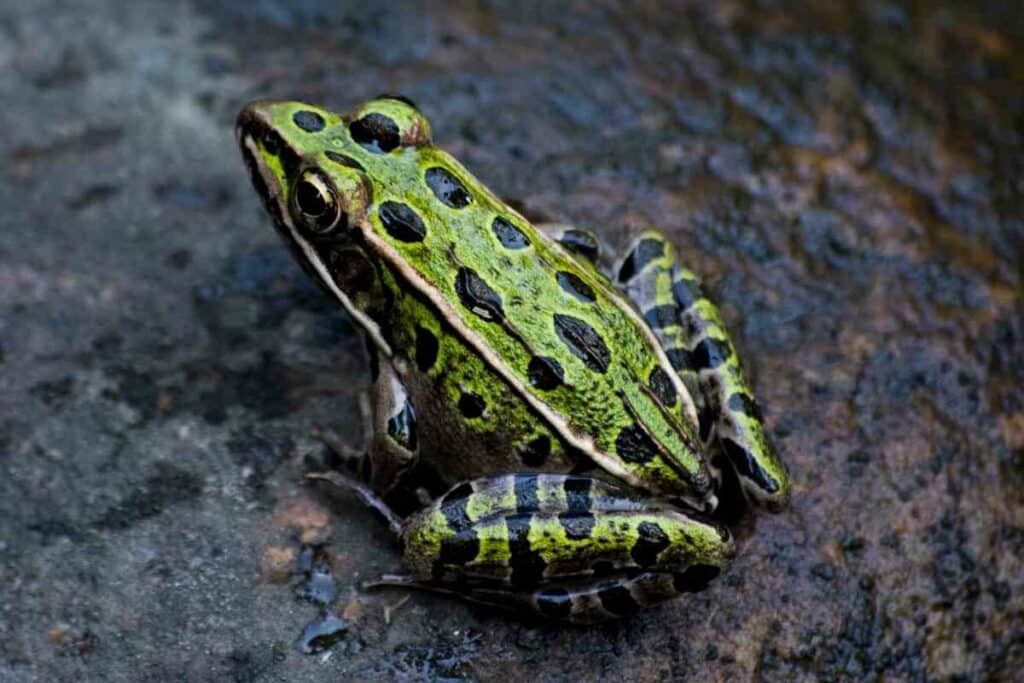
Their skin has special glands on it that produce proteins. These proteins transport substances such as oxygen, water and carbon dioxide into or out of the frog.
Other proteins help fight infections! Every species also has one protein that is used for its defense!
Frog skin isn’t scaly, nor does it have hair. It feels slimy thanks to mucus that protects it. Some have toxic skin – their skin is poisonous!
4. Habitat
Frogs live in fresh water and on land.
They cannot live in saltwater. Some species of frogs actually live in trees! Frogs are found all over the world.
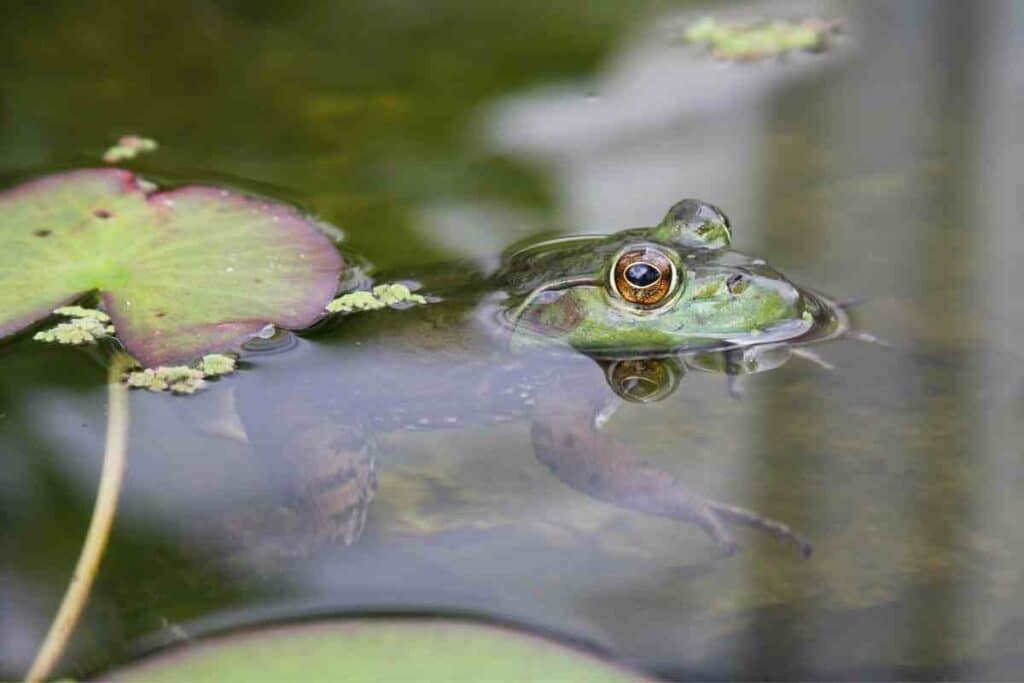
However, introducing a non-native species of frog to a new area may affect the ecosystem badly!
Frogs are found on 6 of the 7 continents (there aren’t any in Antarctica – it’s too cold!).
5. Metamorphosis
Metamorphosis just means ‘transformation’.
Frogs start off as eggs in the form of frogspawn and then tadpoles hatch from the eggs. Tadpoles have gills to breathe as well as a tail!
Eventually – They turn into ‘froglets’ and grow lungs to help them breathe air rather than use the gills.
They still keep their tails for a while. Eventually, a fully grown frog won’t have a tail but will have long legs!
6. Tongues
Frogs use their very long tongues to catch bugs for their food.
They are quite useful as they eat annoying bugs like mosquitos!
7. Frogs as Food
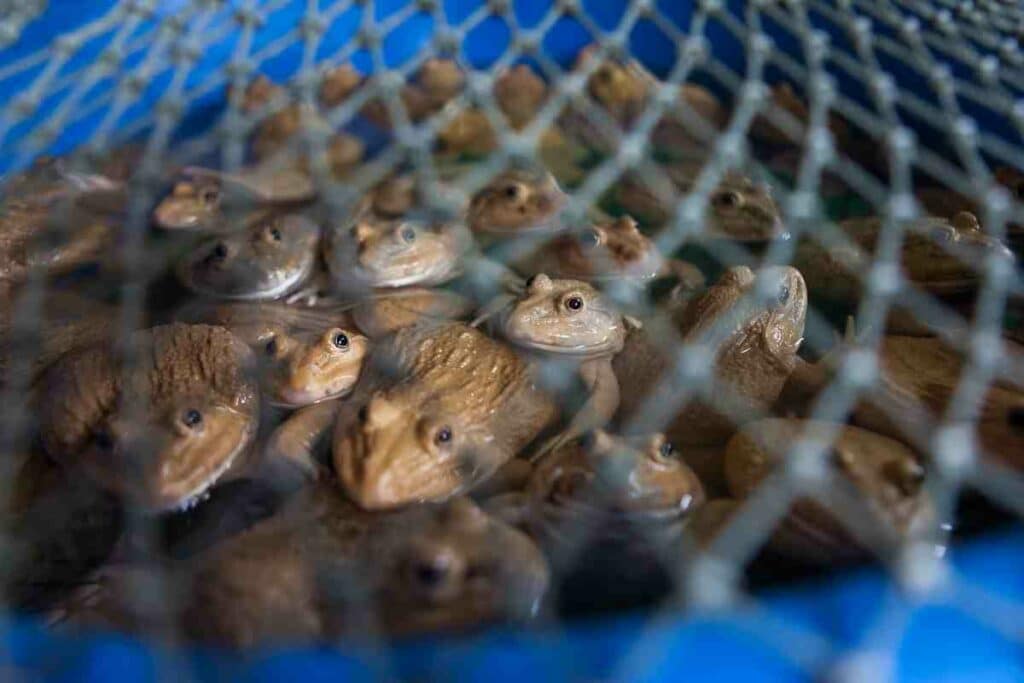
In some parts of the world, frogs are eaten as food!
In France, les cuisses de grenouille is a famous dish – frog’s legs! Frogs are also eaten in China and the Midwest of the USA.
8. Aestivation
When it’s cold, frogs aestivate.
This is a bit like hibernating! They do this when there’s a drought too. Frogs aestivate underground and burrow into holes and mud.
They absorb oxygen through their skin rather than breathing. They also slow down their body’s functions to conserve energy.
When the weather is warmer, they come back out from their hidey holes.
9. Croak!
Frogs make a croak as their distinctive noise, sometimes called a “ribbit”.
Each species has a different-sounding croak (although they may sound similar to us humans!). This is a bit like humans from different places speaking different languages.
Some frogs have really loud croaks that can be heard about a mile away! Their croaks are made louder by their vocal sacs.
Frogs croak mainly to attract a partner to mate with.
10. Camouflage
Many frogs are great at blending into their environment.

Flogs with good camouflaging tend to be nocturnal.
At nighttime, they are awake and getting on with their business.
As Dawn Approaches – They find somewhere where their skin blends into the background so they can sleep without being spotted by predators!
11. Metamorphosis 2
The process that frogs go through from changing from a tadpole to a frog takes around 24 hours! That’s so pretty speedy change!
12. Baby Frogs!
Whilst almost all frogs lay eggs that are fertilized, some frogs give birth to live tadpoles!
This new species that was discovered is called Limnonectes larvaepartus.
13. Biggest Frog
The biggest from known on Earth is the African Goliath Frog.
The largest one ever recorded weighed 8.4 lbs. (3.8kg).
For Reference – That’s about the average weight for a human baby when it’s born! It measures about 15 inches in length, which is about 39 centimeters!
14. Smallest Frog
The smallest of frogs in the world is the teeny tiny Paedophryne amanuensis which measures about 0.3 inches in length (7.7 mm).
To put this into context, it’s a similar size to a house fly.
15. Species
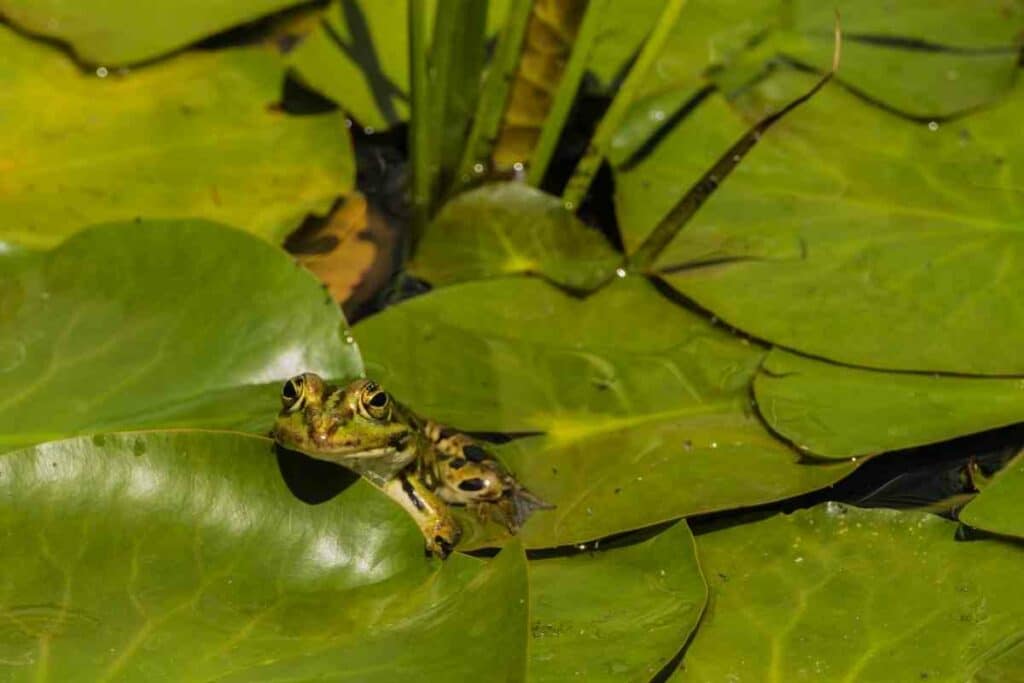
Overall, there are more than 6,300 different species of frog in the world though some of these are now extinct!
This makes up for around 85% of all species of amphibian!
16. Lifespan
The lifespan of a frog depends on its species. It can live between 4 and 15 years.
17. Army
A group of frogs is collectively known as an army.
18. Thirsty?
Because frogs absorb water through their skin, they do not ever need to drink!
19. Poison
A species of frog called the poisonous dart frog is one of the deadliest animals on Earth.
A golden poison dart frog has enough poison in one gram of toxin that it could kill 10,000 people.
20. Rat hunters
One species of frog, the Argentinian Horned Frog, can eat rodents such as rats when it is fully grown!
21. Herpetology
Someone who studies frogs is called a herpetologist. The study of frogs is herpetology.
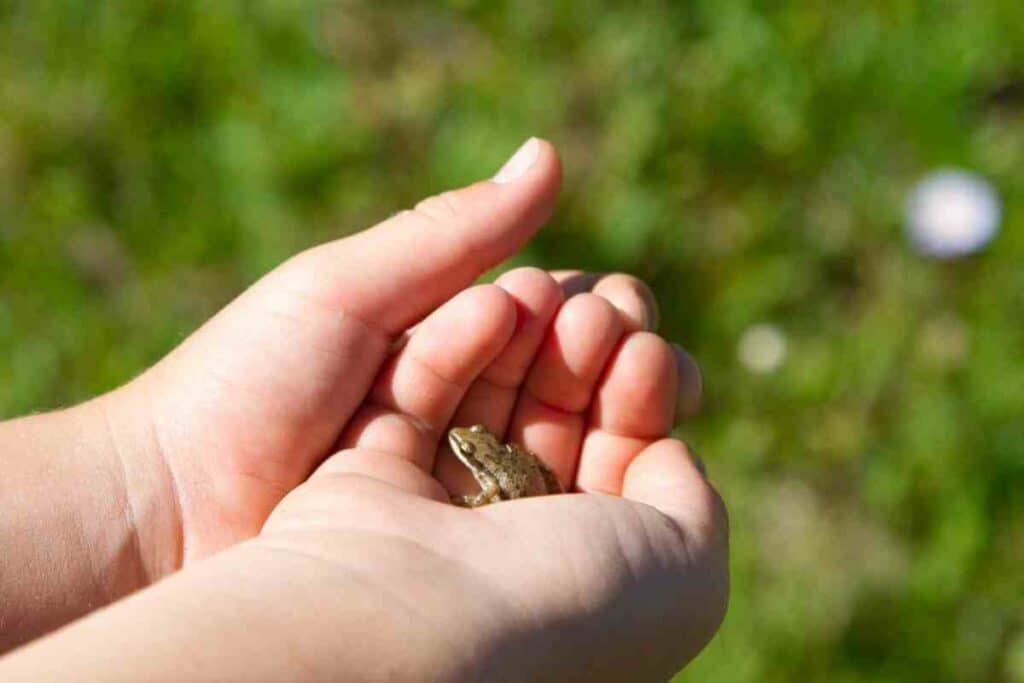
22. High Jump
Thanks to their long legs, frogs can jump up to 20 times their own height.
23. Rainbow Frogs
Although most frogs are green, there are frogs that come in every color of the rainbow!
24. Eyes Closed
Frogs cannot eat if their eyes are open! Strange, but true!
25. Take a peek inside!
There is a species of frog that has such transparent skin that you can see its internal organs.
You can even see its heart beating within its body and its intestines digesting its food.
26. Boy or Girl?
It is quite easy to tell if a frog is male or female. Make frogs have large ears; female frogs have small ears.
27. Gulp!
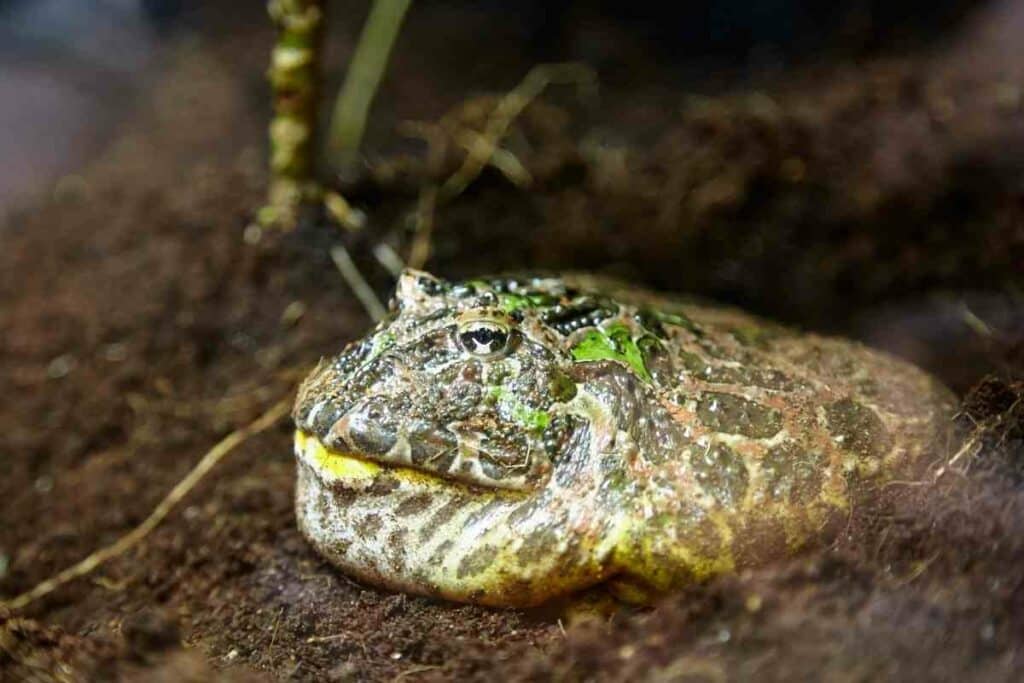
When frogs swallow food, they push it down their throat by pushing out their eyeballs!
28. 360° View
Frogs can see all around them without moving their heads. Their eyes can move in all directions.
29. Eggs
When a frog lays eggs (frogspawn) it can lay as many as 4,000 eggs!
30. Fancy a piggyback?
A species of frog found in Seychelles, East Africa, carries its young on its back until they reach adulthood.
31. It’s raining… frogs?
Back in the 1800s, people used to believe that frogs came down in the rain. This was because frogs often came out when the weather was wet.
32. Desert Frogs
Even though frogs need water to survive, one species of frog is specially adapted to survive in the desert.
It can survive for around seven years without seeing water. This is because it has a special bag that helps it stay moisture.
When It Does Rain – The frog will eat this bag before getting even wetter by the rain!
33. How old?
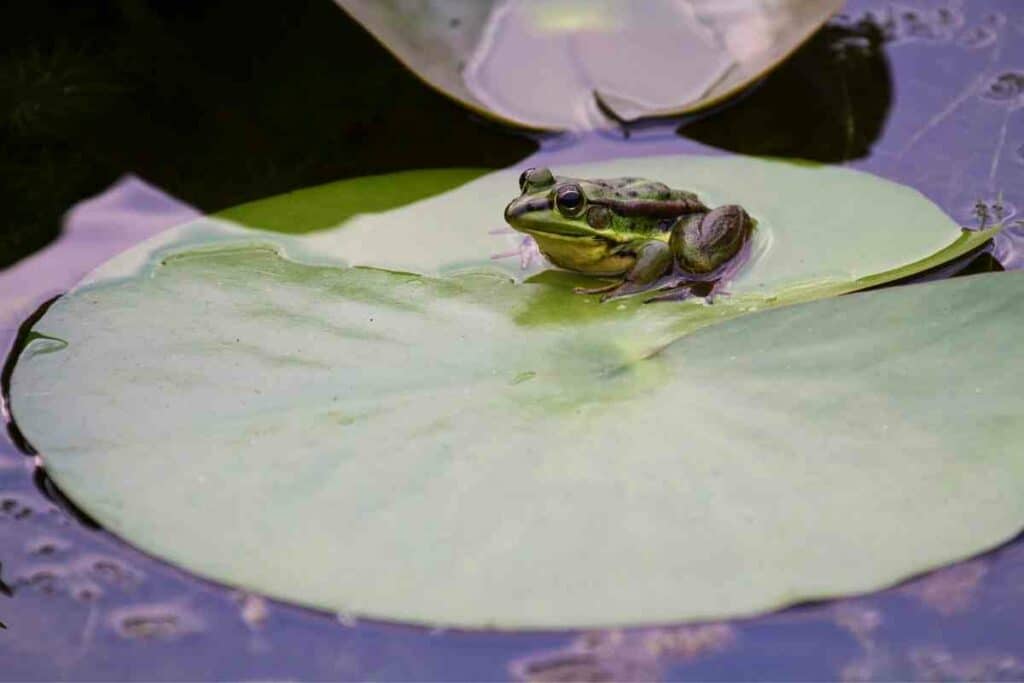
A bit like trees do, frog bones develop a new ring of growth every year during the hibernation period.
When people examine frog bones, they are able to guess the approximate age of the frog!
34. Time to Shed
Every week, a frog sheds its skin! Many of them also eat it as well!
35. Diet
Frogs are carnivores – they cannot survive without eating meat.
Granted, this meat is quite often in the tiny form of insects. Some frogs also eat small mammals and amphibians as well as small birds and fish.
When they’re tadpoles, however, they are actually omnivores and only turn into carnivores as fully grown frogs.
36. Bugs
The type of bugs that frogs eat include bees, ants, cockroaches, crickets, beetles, earthworms, dragonflies, larvae, grubs, earwigs, moths, roaches, mosquitos, snails, slugs, worms and termites.
37. Cannibals!
Yes, you read that right. Frogs sometimes eat their friends! They also may eat their own tadpole offspring!
38. Defense mechanisms
Frogs defend themselves in a variety of ways.
They can puff up their bodies, play dead, ‘scream’, urinate, change color or camouflage themselves.
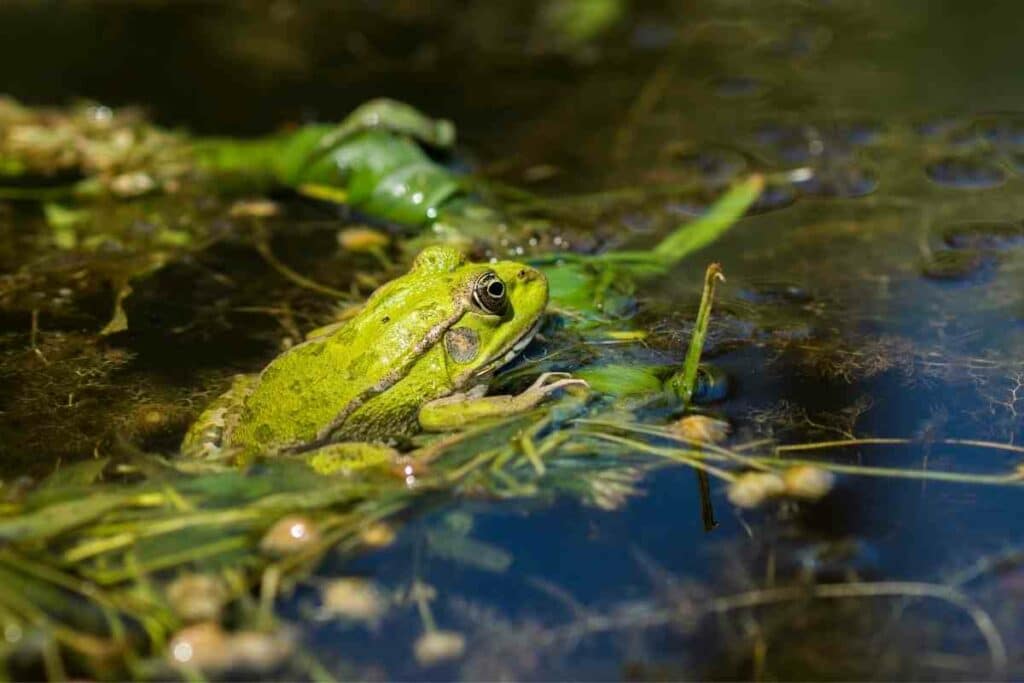
Their bodies are also designed to help them leap out of the way or swim to escape an enemy. When they play dead, they can even slow their breathing right down.
39. Frogs can bite
When frogs are threatened, they can bite. Some even have a strong bite. Some frogs even have teeth!
40. Smell
Contrary to what many think, frogs do not smell!
However, if someone keeps a frog as a pet and does not clean its environment, then the tank where they are kept can really stink.
It is possible to add special plants that can purify the environment to help though.
Final Thoughts on 40 Frog Facts
Which fact do you think kindergarteners will find the most interesting?
The piggybacking frog, the frog that wees when it’s scared, the frog that is see-through?
There’s sure to be a fascinating frog fact that will appeal to every kindergarten child from this list!
